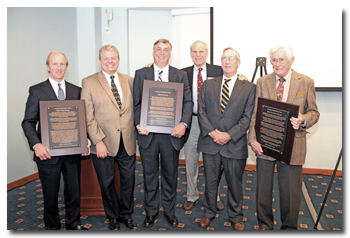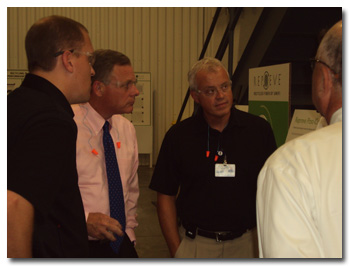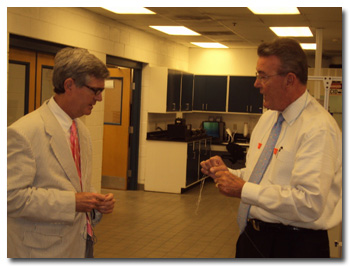WASHINGTON — October 3, 2011 — United States Trade Representative Ron Kirk today called for swift
congressional action on legislation for pending trade agreements between the United States and
South Korea, Colombia, and Panama, along with renewal of Trade Adjustment Assistance reforms and
expired trade preference programs. President Barack Obama formally submitted the legislation for
the three pending trade agreements to Congress today.
“Growing American exports to South Korea, Colombia, and Panama will support tens of thousands
of jobs here at home. We must take every opportunity to get America back to work, and Congress
should pass these agreements without delay,” said Ambassador Kirk. “The House should also support
jobs for American workers by supporting targeted assistance and training for those who may be
displaced by trade. Taken together, the pending trade agreements and Trade Adjustment Assistance
advance a balanced trade agenda that opens new markets for our exporters and new opportunities for
America’s working families.”
Under Trade Promotion Authority already granted by Congress, the legislation for the trade
agreements may not be amended, and Congress has 90 days to hold up-or-down votes on each.
Changes to the legislation would make it subject to normal rules and procedures, including
amendment and filibuster.
In 2010 and 2011, the Obama Administration worked with South Korea, Colombia, and Panama to
successfully address outstanding issues related to each of the three agreements. In particular, the
Administration secured: greater U.S. access to the South Korean auto market; significantly
increased labor rights and worker protections in Colombia; and enhanced tax transparency and labor
rights in Panama. The Administration has been clear that once approved by Congress, agreements will
enter into force only if trading partners are meeting their commitments; for instance, Colombia
must successfully implement key elements of the agreed Action Plan Related to Labor Rights before
the U.S.-Colombia trade agreement will enter into force. Colombia has met all milestones to date as
specified in the Action Plan, including enactment of several far-reaching reforms.
Legislation for the U.S.-Colombia trade agreement also includes a renewal of the Andean Trade
Preferences Act. ATPA was enacted in December 1991 to help Andean countries in their fight against
drug production and trafficking by expanding their economic alternatives.
Late last month, the Senate approved legislation to renew the Generalized System of
Preferences and also to streamline and save costs on a renewal of Trade Adjustment Assistance
reforms. The Senate has sent that legislation to the House, where the Speaker has committed to its
consideration in tandem with the pending trade agreements.
The Generalized System of Preferences expired in December 2010. It promotes economic growth
in the developing world by providing preferential duty-free entry for products from designated
beneficiary countries and territories; GSP also supports American jobs and improves American
competitiveness as many American businesses use GSP imports as inputs to manufacture goods in the
United States.
TAA provides training and support for American workers who are negatively affected by trade
and is traditionally in place as trade agreements pass. It is designed to help workers, firms,
farmers and fishermen transition to alternative employment. The bipartisan compromise negotiated by
Senate Finance Committee Chairman Max Baucus (D-Mont.) and House Ways & Means Committee
Chairman Dave Camp (R-Mich.) is consistent with the goals of the 2009 law that improved the scope
and effectiveness of the program – for instance, covering Americans employed in the services sector
in addition to U.S. manufacturing workers. TAA is an essential component of President Obama’s
balanced trade agenda.
Posted on October 4, 2011
Source: USTR







